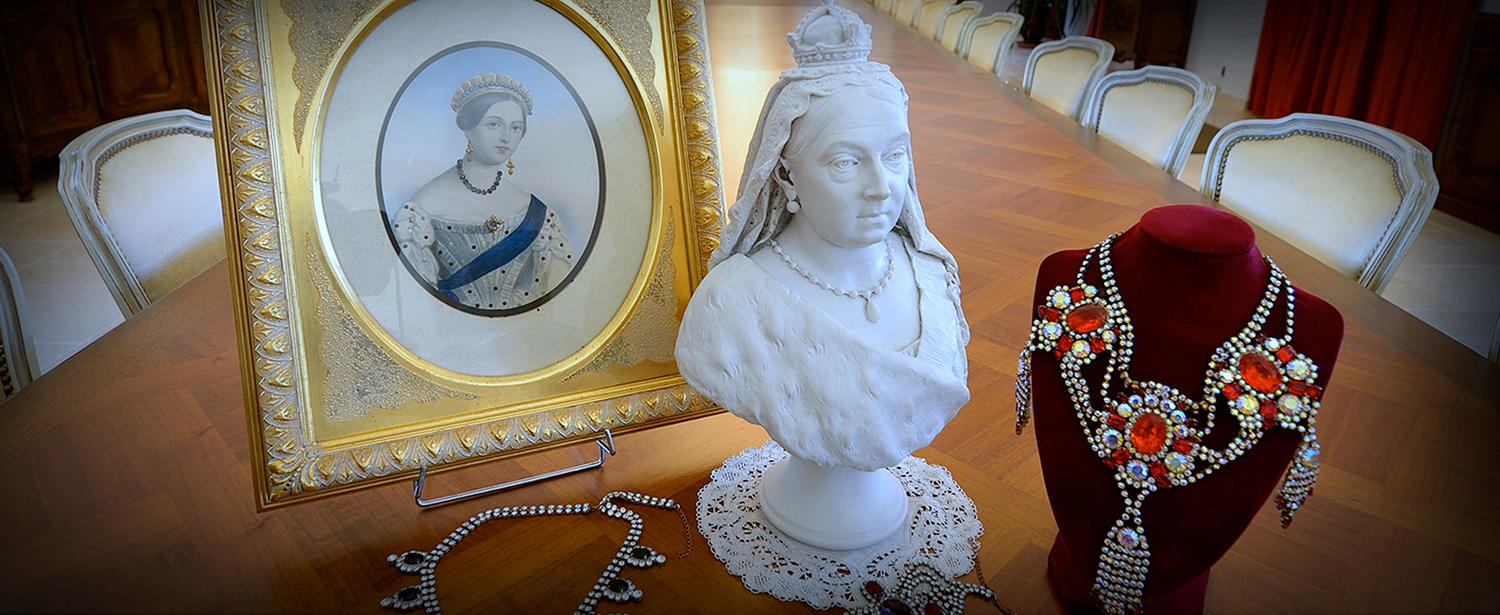
Our Heritage
Built in the 18th century on the remains of a viticultural estate that was initially Roman then Templar, Château de la Clapière is a great Florentine-inspired fortress surrounded by annexes formerly used for farming activities. The château was the fief of the De Clapier family. Then in the late 19th century it became the property of Elizabeth Isabella Johnstone-Gordon, a lady from a great Scottish lineage, who became the Baroness of Roissard.
In 1892, the château was visited by the British Queen Victoria during her still famous stay in nearby Hyères. The Queen was attracted to the site’s beauty, the grounds’ fragrances and particularly the violets, her favourite flower.
At the time, my great grandmother, little Victoria Constant, was eight years old and a native of the Haut-Var region. She learned that she had the same first name as the famous and powerful Queen of England who was staying in Hyères. So Victoria asked her parents to go see the Queen and the entire family decided to travel to Hyères. During the journey, Victoria noticed Château de la Clapière and instantly fell in love with it. She stopped there briefly and took the opportunity to gather some violets for the Queen. On that day, she vowed that she would live at Château de la Clapière when she was older. A few hours later, young Victoria met the Queen and offered her the violets she had gathered. The Queen was moved by this gesture and they had a charming discussion which left a lasting mark on little Victoria’s destiny.
In 1928, Victoria’s daughter, Charlotte Constant, married Henri Fabre, founder of Maison Fabre. As fate would have it, Henri Fabre was also the owner of Château de la Clapière. He entrusted the running of the château and its vineyards to his parents-in-law, Victoria and Léonce Constant. And so Victoria’s childhood dream of living in the château came true!
In 1954, Léonce passed away and Victoria ran the château by herself, transforming and modernising it.
In 1955, 32 of 55 hectares of La Clapière’s vines obtained «Cru Classé» status, sitting on superb terroir bathed in an exceptional micro-climate that adds a floral aspect to our rosés and wonderful roundness to our reds.
In 1988, Victoria passed away at the age of 104 and Château de la Clapière became dormant. The vineyard was still operational as part of Domaines Fabre’s 550 hectares.
In 2006 the grandson of Henri Fabre-Bartalli and great-grandson of Victoria Constant, Henri Fabre-Bartalli, joined with Bruno Fabre-Bartalli to completely overhaul the château and its grounds. The aim was to recreate the site as Queen Victoria and little Victoria Constant would have seen it in the late 19th century. To achieve this, they drew on the château’s original plans and family stories. Every square centimetre was designed by the two of them, even down to the tiniest details. This great adventure would last six years and involve over 100 craftsmen from the Var region. Victoria’s spirit lingered and inspired the château’s current masters.
In 2012, the work was complete. The official opening soirée was attended by His Serene Highness Albert II, Sovereign Prince of Monaco, the second royal to grace Château de la Clapière with his presence 110 years after Queen Victoria’s visit.
Her Majesty, Queen Elizabeth II sent her best wishes and support for the success of Château de la Clapière and its Victoria Museum dedicated to her great great grandmother.


Our Vineyard
The 55-hectare vineyard, of which 32 hectares is «Cru Classé», is located at the gateway to the fertile valley of Borrels and enjoys an exceptional micro-climate that influences the vines as well as the people and animals. The clay limestone soil is caressed by a sea breeze, which gives the syrah, grenache and cinsault rosés - such as the "La Violette" vintage - extremely elegant floral notes. The reds, blended from grenache and syrah grapes, are round, supple and generously fruity. It’s no coincidence that people say Château de la Clapière is the "Romanée-Conti" of Provence.

Our Expertise
The château’s wines are created in Domaines Fabre’s traditional family cellar built in 1833. Our wines are enhanced by family expertise, the latest crop-growing techniques and integrated agriculture. Our wines are at the cutting edge of technology. Their creation is carefully controlled and the wines are bottled on our own bottling line.



